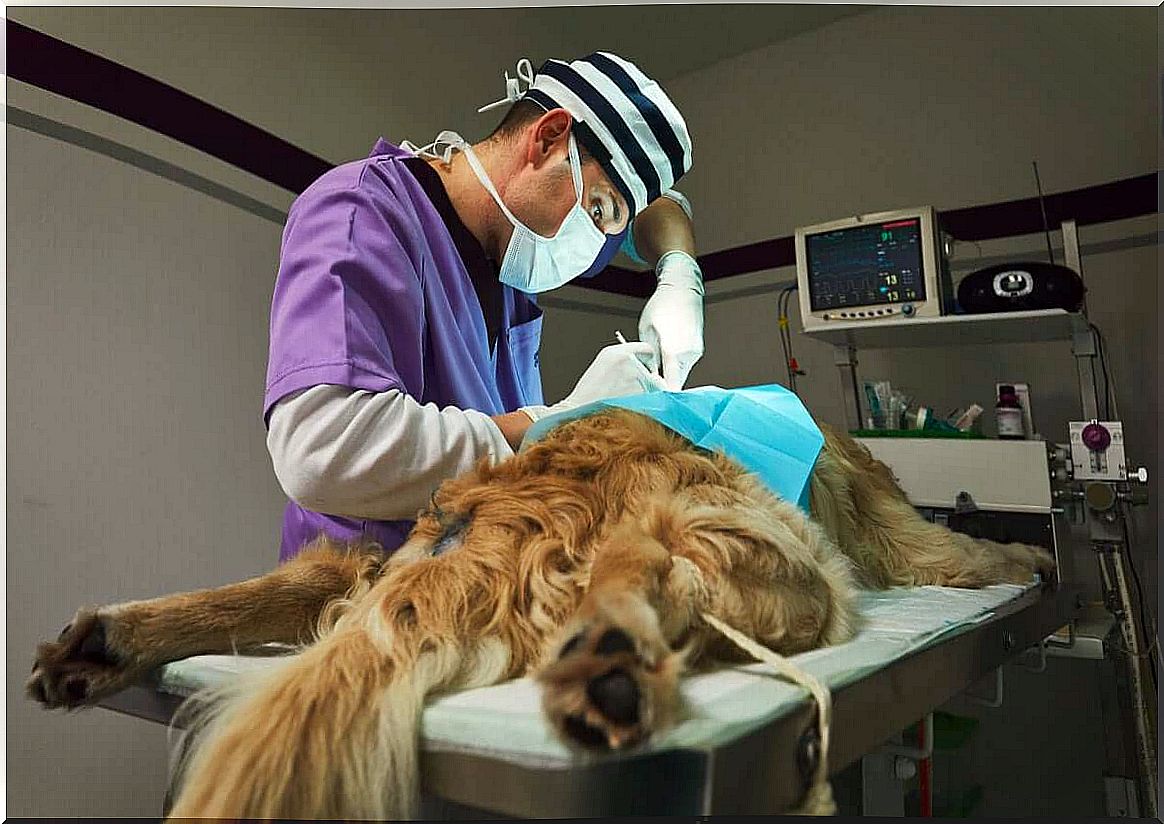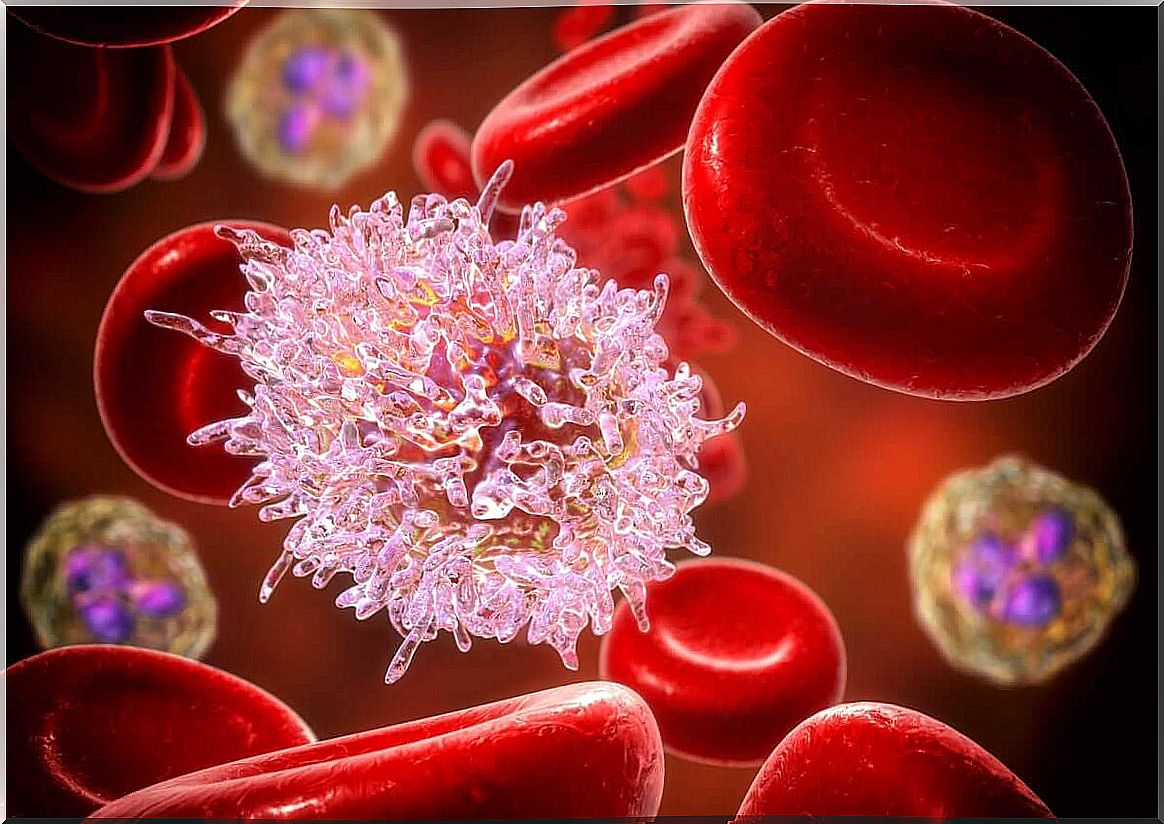Leukemia In Dogs: Causes And Symptoms

Leukemia in dogs is a type of cancer that is fortunately not very common. However, it is important to keep an eye on your dog’s overall health. That way, you can quickly identify and treat the disease should it occur.
Do you know what leukemia is? Do you know the causes and their characteristic symptoms? Here, we provide answers to those questions and more.
What is Leukemia?
Leukemia is a type of cancer that causes an increase in white blood cells in the blood and bone marrow. There are two types in dogs: lymphoid leukemia and myeloid leukemia.
Lymphocytic leukemia is caused by cancer cells in the lymph nodes, which damage tissue and increase the number of white blood cells. On the other hand, myeloid leukemia is caused by the development of cancer cells in the bone marrow.
In general, acute myeloid leukemia is considered the more dangerous of the two. However, the danger should not be ruled out just because one of the types turns out to be chronic.
You should always keep in mind that leukemia symptoms in dogs can get worse. Without proper treatment, this disease can be fatal for your pet. Fortunately, there are clear signs that will allow you to act in a timely and appropriate manner.
If you identify symptoms of leukemia, consult your veterinarian immediately to establish a plan of action. Next, we’ll explain some of the causes, symptoms, and diagnosis of this disease in dogs.

Causes of Leukemia in Animals
Unfortunately, the causes of leukemia in dogs have not been precisely determined. In most cases, veterinarians agree that it develops spontaneously. Thus, leukemia would be a cell mutation in the bone marrow.
However, despite not being able to specify the precise causes, many veterinarians agree that there are some elements that predispose a dog to this disease. Some of the factors that can cause leukemia are:
- Exposure to radiation (including radio waves produced by electrical appliances).
- Some viral illnesses.
- Exposure to toxic chemicals (including some cleaning products).
Because the causes of leukemia in dogs have not been determined, it cannot be completely prevented. However, a balanced diet and exercise routine can largely prevent the predisposition to its development.
Symptoms of Leukemia in Dogs
Symptoms vary slightly depending on the type of leukemia that is affecting your pet. Furthermore, they will also depend on whether it is chronic or acute leukemia. In acute leukemia, symptoms worsen rapidly and must be treated immediately.
On the other hand, symptoms of chronic leukemia are a little harder to identify at first. As it is a long-lasting condition, these symptoms develop very gradually.
Some dogs with chronic leukemia have no symptoms. In these cases, the disease is only discovered in routine blood tests. Therefore, it is very important that you take your pet for a routine check-up with the veterinarian.
Leukemia usually affects adult or elderly pets, usually after the age of six. Some of the most common symptoms to watch out for are:
- Pale gums.
- White tongue.
- Sudden loss of appetite or weight loss.
- Weakness.
- Fever.
- Vomiting.
- Excessive increased thirst or sudden dehydration.
- Irregular breathing or heartbeat.
- Bruising or heavy bleeding from small wounds.
- Constant infections.
- Slow healing.
- Changes in temperament or aggression.
Unfortunately, these symptoms are almost the same as those of many other types of illnesses. Conditions with similar symptoms include many types of cancer and autoimmune diseases. For a proper diagnosis, you should consult your veterinarian.

Diagnosis of Leukemia in Dogs
In many cases, the condition develops slowly and its obvious outward symptoms do not show up in the early stages. For this reason, in most cases, leukemia is discovered through a routine blood test.
If your dog’s blood test shows elevated white blood cells, your veterinarian will likely order more tests. These tests will determine whether your white blood cells indicate infection, leukemia, or other conditions.
If there is any problem, it is recommended to provide the veterinarian with the results of your dog’s previous blood tests. This will allow the provider to determine the animal’s “normal” levels prior to illness.
In the event that your dog is diagnosed with leukemia, your veterinarian will determine the best treatment to follow. In general, most symptoms can be relieved. Although leukemia can never be completely cured, many dogs survive for years.









